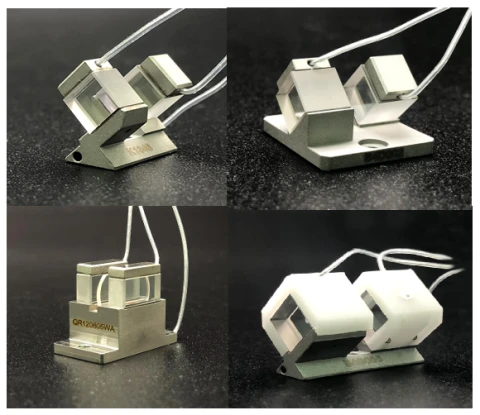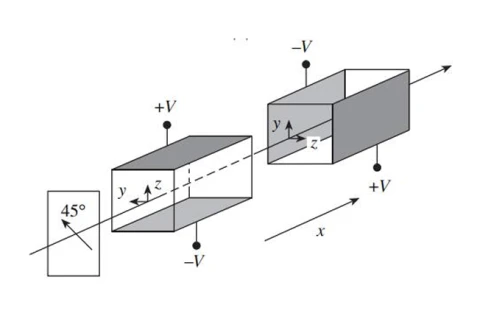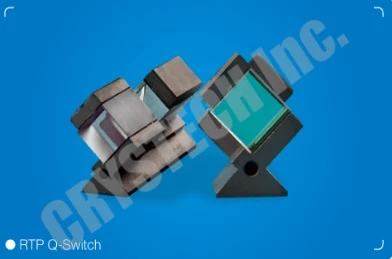Description
RTPQ-Switch: Advanced Electro-Optical Solution
The RTPQ-Switch, developed by Crystech Inc., represents a significant advancement in electro-optical technology. This switch utilizes the RTP crystal, an isomorphous variant of the KTP crystal, known for its exceptional electro-optical properties. The RTP crystal offers a comprehensive range of advantages, including a large electro-optical coefficient, a high damage threshold, and high resistivity. With a broad transparent wavelength range from 0.35 to 3.5 μm, the RTP crystal is non-deliquescent and exhibits low insertion loss, making it highly suitable for high repetition frequency applications. Notably, this crystal material does not develop gray tracks under intense laser irradiation, which enhances its reliability and effectiveness in demanding environments.
To optimize performance, the RTPQ-Switch is designed with two crystals assembled with a 90° rotation around the optical axis. This configuration compensates for static birefringence and minimizes the impact of temperature variations on the refractive index. The switch operates using the transverse electro-optical effect, where the applied electric field is perpendicular to the optical path. By adjusting the cross-sectional size and the length of the optical path, the operating voltage can be significantly reduced. This design ensures excellent temperature stability and a minimal piezoelectric ringing effect, making the RTPQ-Switch ideal for a wide range of operating temperatures and high repetition frequency applications.
The RTPQ-Switch is a versatile component used across various fields, including aerospace, national defense, medical, industrial, and scientific research. Its robust construction and advanced electro-optical properties ensure reliable performance in critical applications, such as laser Q-switching, pulse selection, phase modulation, cavity dumping, and attenuation. With its innovative design and superior material properties, the RTPQ-Switch is a preferred choice for professionals seeking high-quality electro-optical solutions.
RTPQ-Switch Electro-Optical Crystal for High Repetition Rate Lasers
Specifications
| Aperture Diameter: | 2 mm |
|---|---|
| Peak Optical Power Density: | 600 MW/cm^2 |
| Wavelength Range: | 420 – 2800 nm |
| Transmission: | 98.5 % |
| Extinction Ratio: | >= 100:1 |
| Half-Wave Voltage (QR5510A Model): | 2000 V |
| Application Wavelength Range: | 420-2800 nm |
| Typical Laser Wavelengths: | 755/1030/1064/1535/2100/2780 nm |
| Operating Temperature Range: | -50℃ to +70℃ |
| High Resistivity: | >10^11 Ω•cm |
| High Damage Threshold: | >10 J/cm² @ 1064 nm 10 ns 10 Hz |
| Low Insertion Loss: | <1% @ 1064 nm |
| Crystal Structure: | Orthorhombic system |
| Lattice Parameters: | a=12.96Å; b=10.56Å; c=6.49Å |
| Mohs Hardness: | 5 |
| Density: | 3.6 g/cm³ |
| Melting Point: | ~1000℃ |
| Ferroelectric Transition Temperature: | ~810℃ |
| Thermal Expansion Coefficient: | αx=1.01x10^-5, αy=1.37x10^-5, αz=-4.17x10^-6 |
| Dielectric Constant Eeff: | 13.0 |
| Thermo-Optic Coefficient: | -0.029 nm/℃ |
| Electro-Optic Constants: | Y-CUT: r51=38.5 pm/V, X-CUT: r33=35 pm/V, r23=12.5 pm/V, r13=10.6 pm/V |
| Nonlinear Coefficients: | d15=2.0 pm/V, d24=3.6 pm/V, d31=2.0 pm/V, d32=3.6 pm/V, d33=8.3 pm/V |
| Resistivity: | ~10^11-10^12 Ω·cm |
| Deliquescence: | None |
| 1064 Nm Half-Wave Voltage (2x2x20mm): | 800 V |
| 1064 Nm Half-Wave Voltage (4x4x20mm): | 1600 V |
| 1064 Nm Half-Wave Voltage (6x6x20mm): | 2400 V |
| 1064 Nm Half-Wave Voltage (8x8x20mm): | 3200 V |
| Transmission Range: | 350-4500 nm |
Features
- Low Operating Voltage: For example, the half-wave voltage of the QR5510A model product is about 2000V.
- Wide Application Wavelength Range: 420-2800 nm.
- Typical Laser Wavelength Representatives: 755/1030/1064/1535/2100/2780 nm.
- Wide Operating Temperature Range: -50℃ to +70℃.
- High Resistivity: >1011 Ω•cm.
- High Damage Threshold: >10 J/cm² @ 1064 nm, 10 ns, 10 Hz.
- Low Insertion Loss: <1% @ 1064 nm.
- Good Stability: Non-deliquescence.
- No Piezoelectric Ringing Effect: Suitable for high repetition frequency applications (up to 100 KHz).
Applications
- Laser Q-switching
- Pulse selector
- Phase modulation
- Cavity dumping
- Attenuator
Frequently Asked Questions
What is RTP and why is it a desirable crystal material for electro-optic modulators and Q-switches?
How does RTP work in pairs to compensate for birefringence?
What type of laser sources is RTP most suited for?
What are some features of RTP?
What are some applications of RTP?
Similar Products
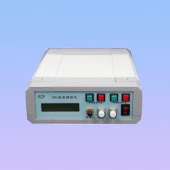
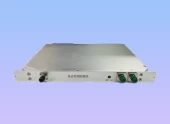
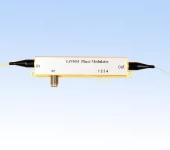
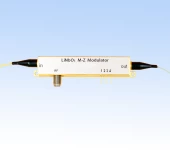
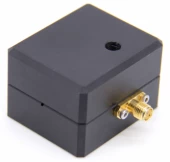
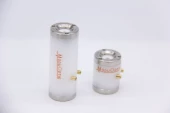
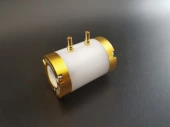
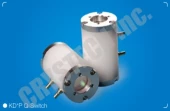
Your inquiry has been received.
Create an account by adding a password
Why create an account?
- Auto-complete inquiry forms
- View and manage all your past messages
- Save products to your favorites
- Close your account anytime — no hassle
